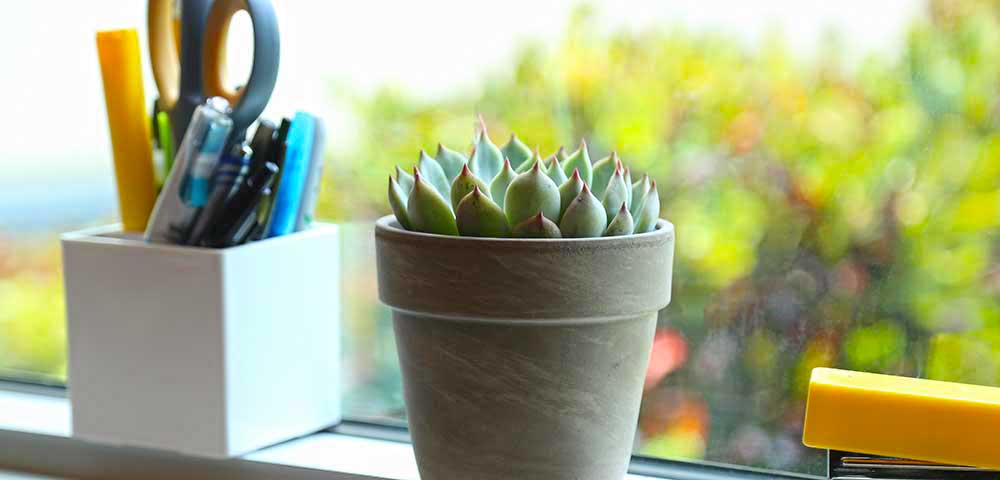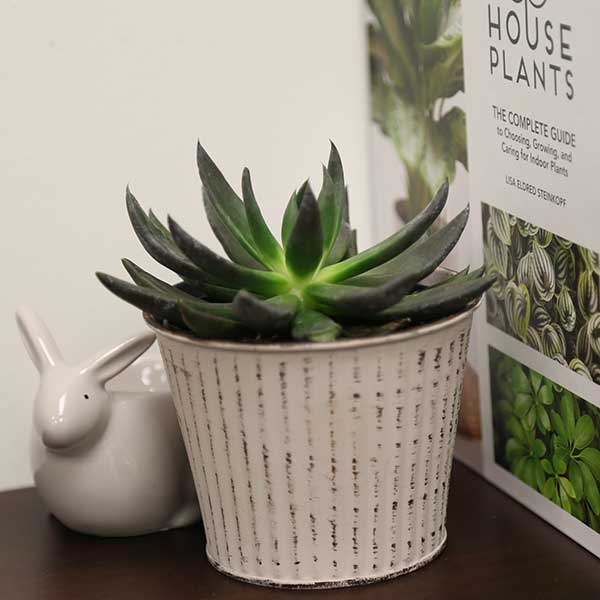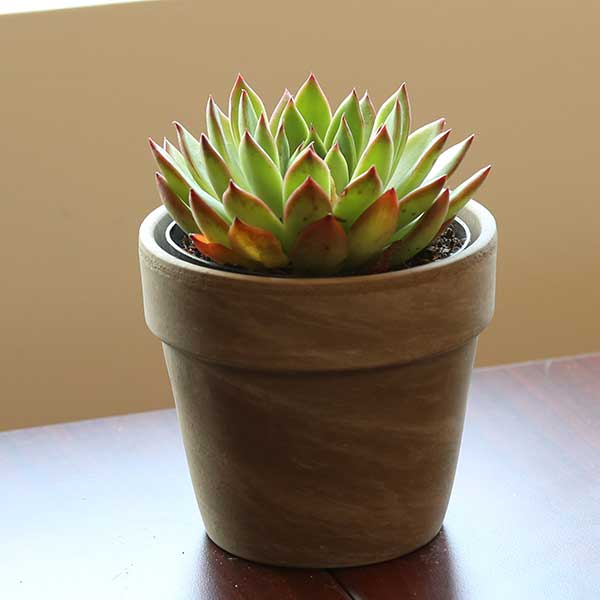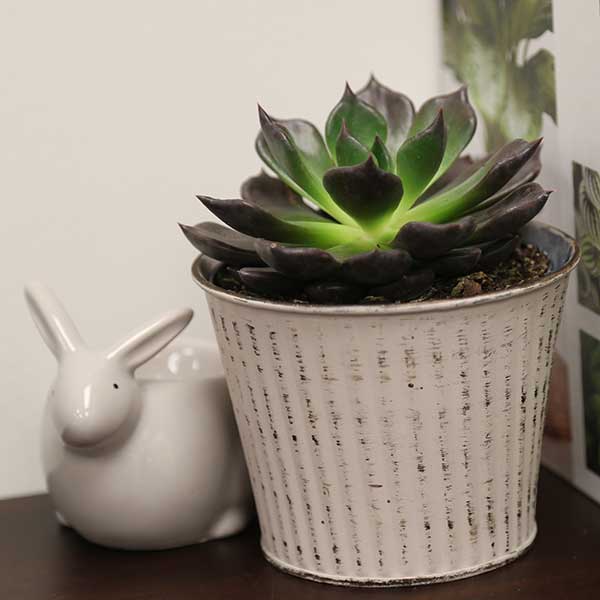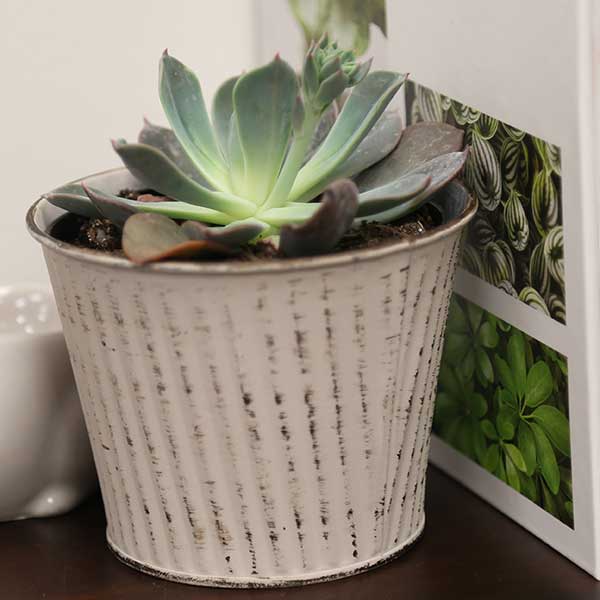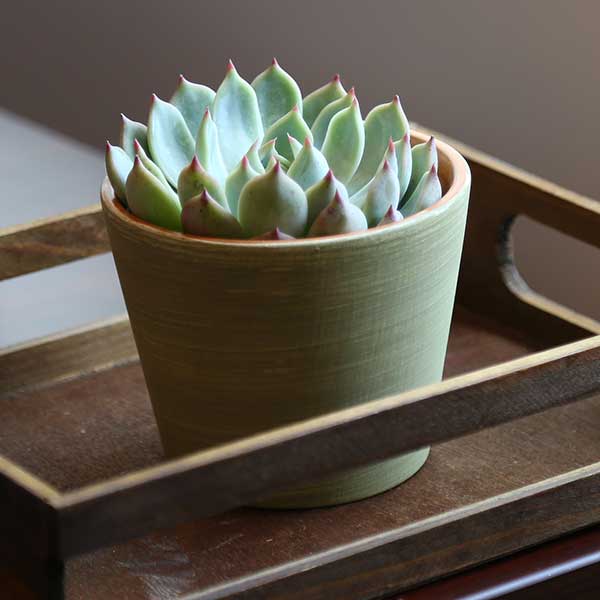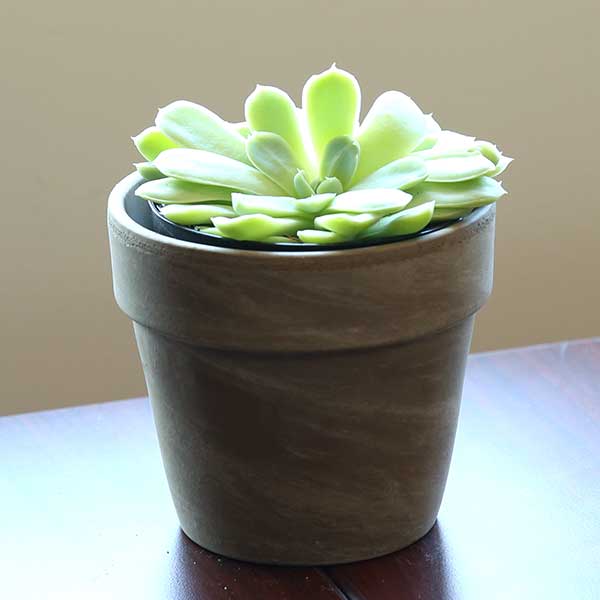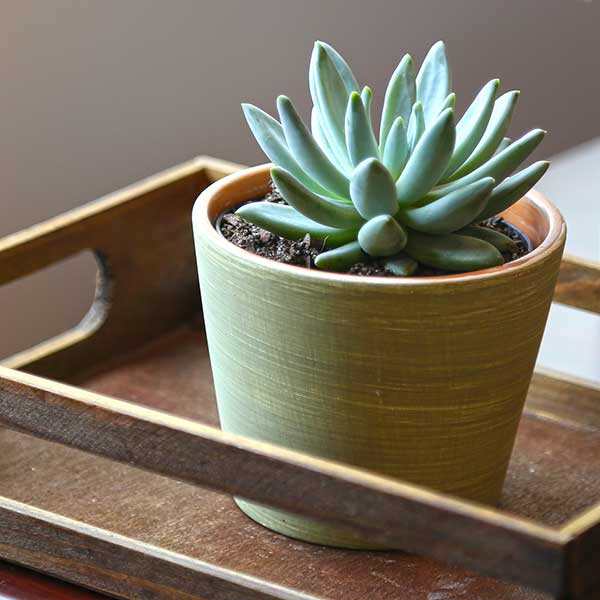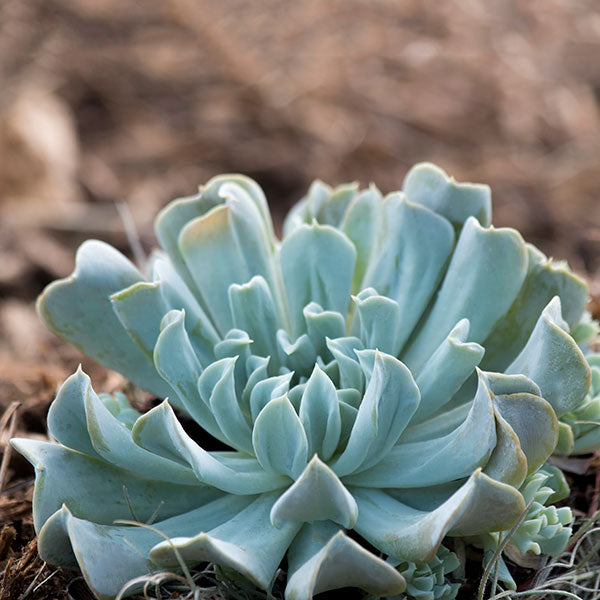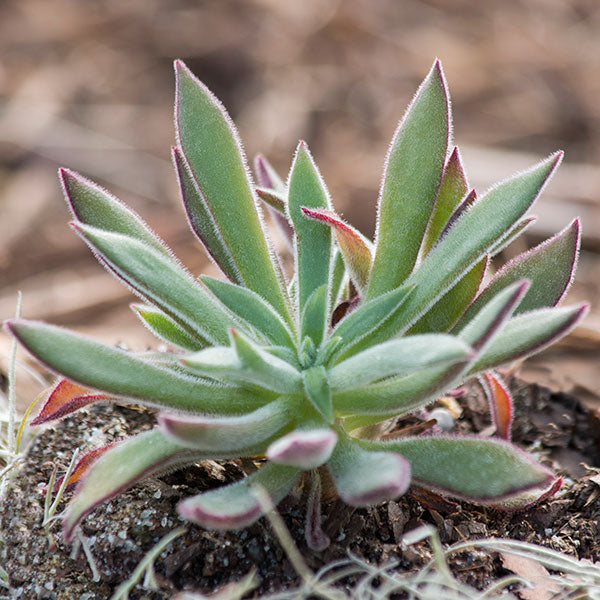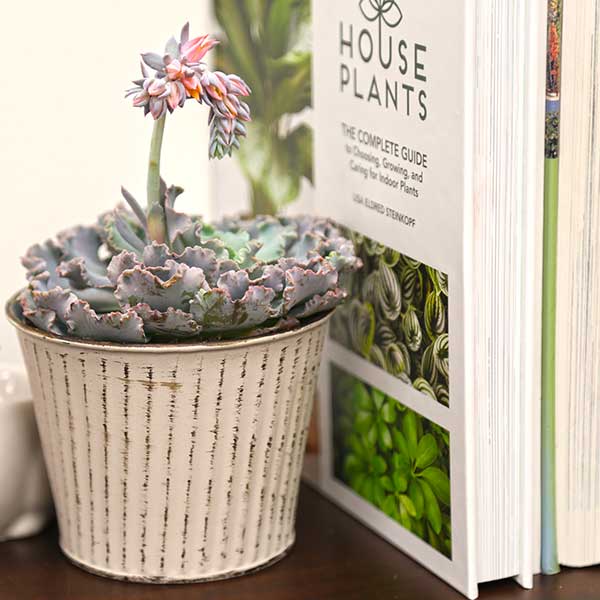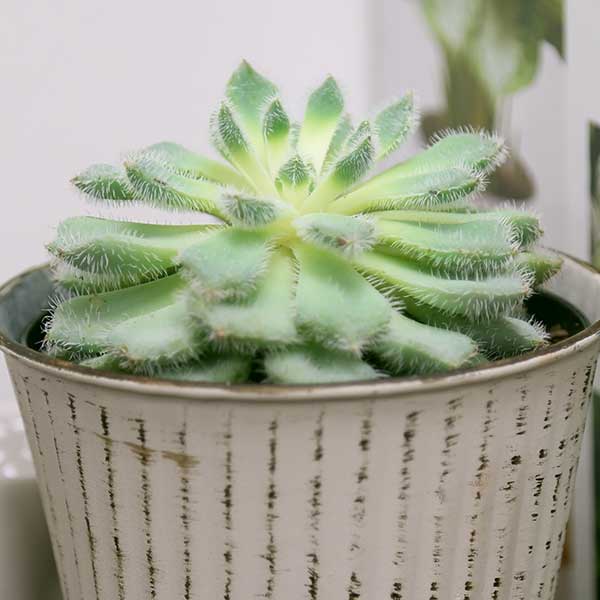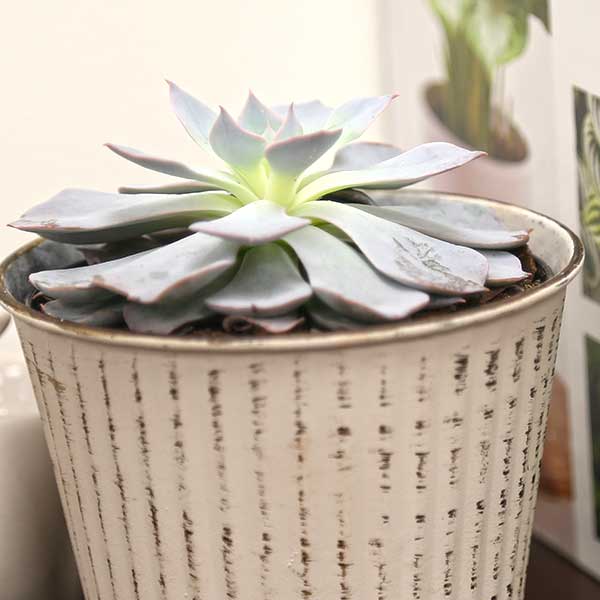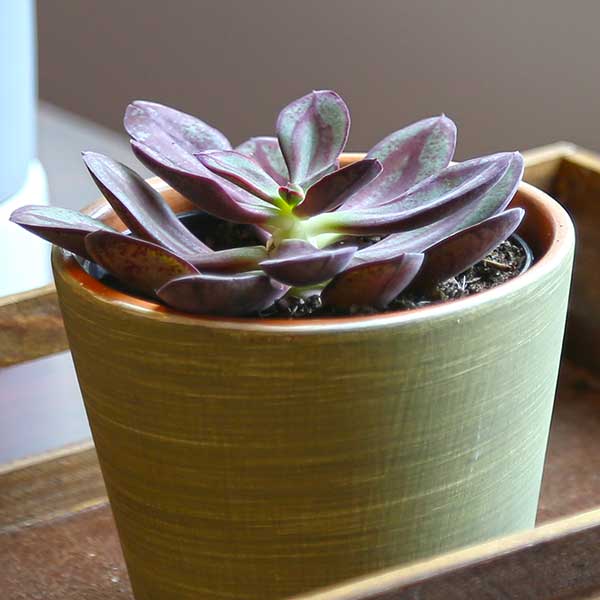Echeveria (Echeveria spp.)
Echeveria Plant Features
Succulents are super popular because they’re stylish and have low water needs. Echeveria are some of the most popular succulent types because the leaves grow out from a central point, called a rosette. This gives the plant a flower- or rose-like appearance.The echeveria family brings a variety of colors and textures to your indoor and outdoor displays. The classic types of this succulent are blue-gray or gray-green in color. Hunt around and you’ll find green, purple, and variegated varieties, as well. Most are low-growing and topped in summer with clusters of bell-shaped flowers on tallish stems.
Indoors, echeveria’s tidy growth makes it perfect for decorating window sills, desks, and tabletops. You can’t go wrong with different echeveria types for living walls and other DIY projects. Outdoors, enjoy these plants in container gardens, as well as low-water landscape beds and borders. Because they’re so drought tolerant, you can practically plant them and forget them!
Echeveria Growing Instructions
Echeveria have a reputation for being easy to care for, and it’s true if you have the right conditions. The first thing to know about them is that they need lots of light—the brightest spot you have inside. Unfortunately, echeveria, like many succulent types, don’t do well in low light situations. Outdoors, they appreciate all-day sun or a spot with morning shade and afternoon sun.These textural plants do have low-water needs, whether you grow them indoors or out. Water as the top several inches of the potting mix dries to the touch. How much and often that is will depend on factors such as light, temperature, humidity levels, the type of soil or potting mix, the size of the pot, and other factors.
Their low-water needs make most echeveria relatively slow growers. That said, they don’t need a lot of fertilizer. If you’d like to feed them, however, you can use any general-purpose product. Be sure to follow the directions and don’t exceed the recommendations on the product packaging.
Echeveria typically don’t require pruning except to remove the faded flower stems. (They only bloom in high-light situations; if you’re growing them indoors and they don’t get enough brightness, your echeveria may not bloom.)
Note: These succulents are not meant for human or animal consumption.
-
Water
Low water needs
-
Light
Indoors: High light
Outside: Part sun
Outside: Sun
-
Colors
Blue
Green
Orange
Pink
Red
Silver
Variegated
Yellow
-
Special Features
Colorful foliage
Super-easy to grow
Complement your Echeveria
AloeAloe and echeveria are both succulent types that like bright light and don't need a lot of water (indoors or out!).
Kalanchoe
Accent echeveria with the wild and diverse types of Kalanchoe. K. 'Chocolate Solider' is fabulous with E. setosa, for example.

